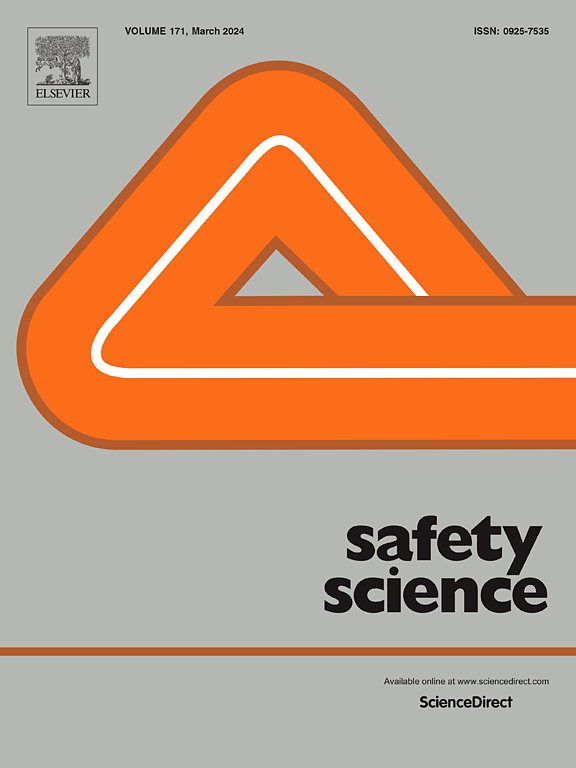矿工损害健康行为的风险耦合分析:多方法融合与实际应用
IF 4.7
1区 工程技术
Q1 ENGINEERING, INDUSTRIAL
引用次数: 0
摘要
对矿工损害健康的行为进行风险分析对于促进矿工的整体健康和福祉至关重要。本文提出了一种基于贝叶斯网络(BN)模型、N-K 模型和累积风险(CR)模型的矿工健康损害行为风险耦合量化方法。首先,分析了矿工健康损害行为的因果关系,并对风险因素进行了系统分类。其次,划分了物理环境风险因素、社会心理环境风险因素和个体特征风险因素导致的风险耦合类型。第三,通过对矿工损害健康行为的综合风险分析,构建了 BN 模型。利用 N-K 模型和 CR 模型,对问卷数据进行计算,以确定所建立的 BN 中影响风险耦合节点的参数。最后,通过基于三轴的方法对所建立的模型进行验证。随后,对风险耦合类型进行了敏感性分析,并利用互信息对风险因素的影响进行了量化。利用所建立的模型,进行了不确定性分析,以探讨风险因素的失效率对主要风险耦合类型的影响。本文章由计算机程序翻译,如有差异,请以英文原文为准。
Risk coupling analysis of miners’ health-compromising behaviors: A multimethod fusion with practical application
Risk analysis of miners’ health-compromising behaviors is essential for advancing their overall health and well-being. This paper proposed a method for quantifying the risk coupling of miners’ health-compromising behaviors based on the Bayesian network (BN) model, N-K model, and cumulative risk (CR) model. First, the causation of miners’ health-compromising behaviors was analyzed, and the risk factors were systematically classified. Second, the types of risk coupling resulting from physical environmental risk factors, psychosocial environmental risk factors, and individual characteristics risk factors were delineated. Third, the BN model was constructed through a comprehensive risk analysis of miners’ health-compromising behaviors. Leveraging both the N-K model and the CR model, calculations were applied to the questionnaire data to identify the parameters influencing the risk coupling nodes within the developed BN. Finally, the established model undergoes validation through a three-axiom-based method. Subsequently, a sensitivity analysis of risk coupling types was conducted, and the influences of risk factors were quantified using mutual information. Employing the developed model, an uncertainty analysis was performed to explore the effects of failure rates of risk factors on the primary risk coupling types.
求助全文
通过发布文献求助,成功后即可免费获取论文全文。
去求助
来源期刊

Safety Science
管理科学-工程:工业
CiteScore
13.00
自引率
9.80%
发文量
335
审稿时长
53 days
期刊介绍:
Safety Science is multidisciplinary. Its contributors and its audience range from social scientists to engineers. The journal covers the physics and engineering of safety; its social, policy and organizational aspects; the assessment, management and communication of risks; the effectiveness of control and management techniques for safety; standardization, legislation, inspection, insurance, costing aspects, human behavior and safety and the like. Papers addressing the interfaces between technology, people and organizations are especially welcome.
 求助内容:
求助内容: 应助结果提醒方式:
应助结果提醒方式:


